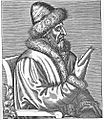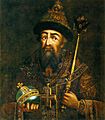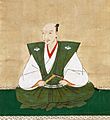16th century facts for kids
| Millennium: | 2nd millennium |
|---|---|
| Centuries: | 15th century · 16th century · 17th century |
| Decades: | 1500s 1510s 1520s 1530s 1540s 1550s 1560s 1570s 1580s 1590s |
| Categories: | Births – Deaths Establishments – Disestablishments |
The 16th century was a time of big changes around the world, lasting from 1501 to 1600. During these 100 years, people from Europe explored and settled in new lands, especially the Americas. They also looked for new ways to travel to Asia. In Europe, a major religious shift called the Protestant Reformation changed how people thought about faith and led to many conflicts. This century was full of exciting discoveries, powerful empires, and new ideas that shaped the future.
What Happened in the 16th Century?
The 16th century was a period of huge global transformation. It saw the rise of powerful empires and the spread of European influence across the globe. New trade routes were established, and different cultures met, sometimes peacefully, sometimes through conflict.
The Age of Exploration
This century was a golden age for explorers. European sailors bravely ventured into unknown waters, searching for new lands and trade routes. Their voyages connected continents and changed maps forever.
Discovering New Worlds
- Ferdinand Magellan led the first expedition to sail all the way around the world between 1519 and 1522. This amazing journey proved that the Earth was round and much larger than people thought.
- Hernán Cortés arrived in the Americas and conquered the Aztec Empire in Mexico. This led to Spain taking control of vast new territories.
- Many other explorers, like Afonso de Albuquerque, helped European countries establish trade networks and colonies in different parts of the world.
Major Changes in Europe
Europe experienced many important events during this century, including religious reforms and powerful rulers.
The Protestant Reformation
- The Protestant Reformation began in the early 1500s. It was a movement that challenged the power of the Catholic Church.
- People like Martin Luther and John Calvin believed the Church needed to change. They started new forms of Christianity, leading to many religious wars and political changes across Europe.
- In England, Henry VIII broke away from the Catholic Church to create the Church of England. This had a huge impact on English society and politics.
Powerful Rulers and Empires
- Many strong kings and queens ruled European countries. Philip II of Spain controlled a vast empire that included parts of Europe, the Americas, and Asia.
- Francis I of France was a powerful king who fought against Spain for control in Europe.
- In England, Elizabeth I became queen and led her country through a period of great strength and cultural growth. She famously defeated the Spanish Armada in 1588.
- In Russia, Ivan IV became the first Tsar of Russia. He greatly expanded the Russian Empire.
Empires Beyond Europe
While Europe was changing, other powerful empires thrived in different parts of the world.
The Mughal Empire
- The Mughal Empire in India was one of the largest and richest empires of its time.
- Akbar was a famous Mughal Emperor who ruled for many years. He was known for his military skills and for promoting peace between different religions.
- The Mughals were skilled in art, architecture, and technology, including advanced artillery.
The Ottoman Empire
- The Ottoman Empire was a huge and powerful empire that controlled much of Southeast Europe, North Africa, and the Middle East.
- They fought many battles, including the Battle of Lepanto in 1571, a major naval battle against European forces.
Japan's Unification
- In Japan, powerful leaders like Oda Nobunaga began to unify the country after a long period of civil war. This laid the groundwork for a more stable Japan in the future.
New Ideas and Discoveries
The 16th century was also a time of great intellectual progress.
Scientific Breakthroughs
- Nicolaus Copernicus proposed that the Earth and other planets revolve around the Sun, not the other way around. This idea, called the heliocentric model, changed how people understood the universe.
- New ideas in law and philosophy also emerged. Scholars like Alberico Gentili helped develop the foundations of international law, which guides how countries interact with each other.
Art and Culture
- The Renaissance continued to flourish, producing incredible art and literature.
- Leonardo da Vinci painted the famous Mona Lisa during this period, a masterpiece still admired today.
- Many other artists and writers created works that are still studied and enjoyed.
Images for kids
-
Mona Lisa, by Leonardo da Vinci, c. 1503–06, one of the world's best-known paintings
-
Ferdinand Magellan led the first expedition that circumnavigated the globe in 1519–1522.
-
The Islamic gunpowder empires: Mughal Army artillerymen during the reign of Jalaluddin Akbar
-
The Mughal Emperor Akbar shoots the Rajput warrior Jaimal during the Siege of Chittorgarh in 1567
-
The fall of Spanish Armada
-
Abu'l-Fazl ibn Mubarak presenting Akbarnama to Mughal Azam Akbar, Mughal miniature
-
Dr Alberico Gentili, the Father of international law
-
Francis I of France
-
Hans Holbein the Younger, c. 1536 – 1537, Henry VIII, King of England and Ireland
See also
 In Spanish: Siglo XVI para niños
In Spanish: Siglo XVI para niños





















